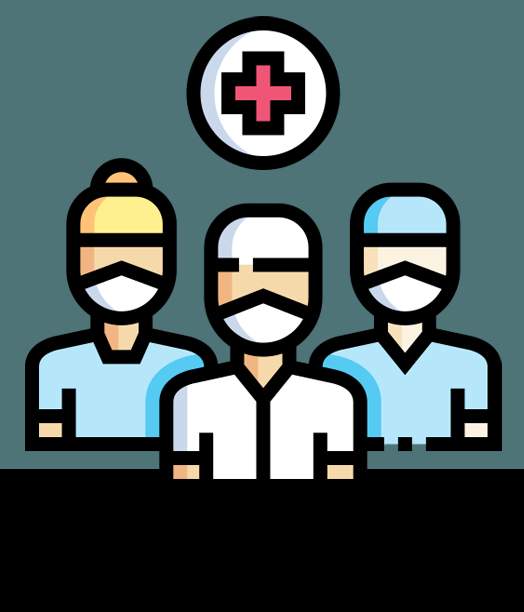

Top Priority — 3 Health Care Emergency Preparedness Tips

Hurricane Helene tore through Florida’s Gulf Coast area on its way north in late September, bringing with it a storm surge of more than two feet above previous records. As other buildings in the area were taking in water, Tampa General Hospital, which sits on an island, remained dry.
That wasn’t good luck. It was a function of emergency preparedness. Five years earlier the hospital began investing in a floodwall from AquaFence, a Norwegian company that supplies industrial-grade, watertight barriers that can be deployed rapidly in a flood, a Washington Post report notes.
The high fence helps safeguard the hospital’s main campus from flood threats — a vitally important protection since Tampa General is the only Level 1 trauma center in the region.
Other health care organizations in states like North Carolina weren’t so fortunate. Several days after the storm that led to a collapse of cellphone networks and roads, UNC Health Appalachian had no way to communicate with its staff and was trying to locate about 25% of its workers, according to news reports.
Like hurricanes Sandy and Ian, the devastation wrought across the Southeast by Hurricane Helene is the latest example of how quickly health facility emergency preparedness plans can be severely tested or overwhelmed by Mother Nature.
Hospital and health system executives and their partners who have responded to other crises — caused by tornadoes, wildfires, chemical spills or other disasters — have learned important lessons about how to ensure continuity of care even at the worst of times.
In a recent AHA Leadership Scan panel discussion, “When Disaster Strikes: How to Maintain Continuity of Care,” leaders from Lee Health, Fort Myers, Florida, California-based Fountain Valley Regional Hospital and North American Partners in Anesthesia shared insights on building and maintaining a culture of preparedness. The frank discussion illustrates the need for innovative thinking, building effective leadership teams outside the C-suite, and protecting and supporting staff amid harrowing circumstances.
3 Ways to Prepare for a Disaster
 1 | Cultivate a preparedness culture.
1 | Cultivate a preparedness culture.
It may be part of every organization’s regularly scheduled drills, but there should be nothing routine about emergency preparedness. Leaders need to cultivate a culture of preparedness, Randy S. Rogers, CEO at Fountain Valley Regional Hospital, notes.
In responding to disasters like floods, tornados and chemical spills, Rogers stresses the need to practice for worst-case scenarios — even when that can be difficult to envision — and to develop leadership teams outside the C-suite who will serve on the front lines of ensuring continuity of care.
“I am never the incident commander. I am in a support role,” Rogers says, adding that those chosen to lead during times of crisis don’t necessarily have to be from emergency operations or a chief nursing officer. “It can be a director of rehab services or a radiology manager, someone who shows promise that they can provide leadership in a crisis.”
 2 | Prepare, but expect the unexpected.
2 | Prepare, but expect the unexpected.
When Hurricane Ian hit landfall in Florida in September 2022, Lee Health was impacted by the disruption of the entire city water supply because of the high number of uprooted trees. The health system suddenly had facilities without water for fire suppression and life-safety needs — scenarios they had not planned for in drills because they had never happened before.
“We had to evacuate an entire children's hospital; and 72 NICU bed patients had to be transferred across various parts of the state for safety [reasons],” says Scott Nygaard, CEO at Lee Health. The situation reminded Nygaard of a quote from boxer Mike Tyson: “Everyone has a plan until they get punched in the mouth.”
The lesson learned was a valuable one. In May, Lee Health received a $4.3 million grant from the Florida Division of Emergency Management’s Hurricane Recovery Grant Program to help support Lee Health’s $14.7 million project to build 15 deep wells to support essential health care services during any future post-disaster recovery.
 3 | Plan for ways to expand and optimize staff utilization.
3 | Plan for ways to expand and optimize staff utilization.
Leo Penzi, M.D., executive vice president and chief medical officer (CMO) for North American Partners in Anesthesia, has viewed emergency preparedness through three lenses — as an anesthesiologist, as a CMO and as a member of incident command during Hurricane Sandy in 2012.
“One of the problems that we must overcome in general is that [disaster situations] are often viewed by the front-line staff as problems that the emergency room or administration deals with. We must get past that,” Penzi says. “The first thing we need to do for internal preparedness is to get people to understand that this is everyone’s problem, and we can all contribute [to solving it].”
Tabletop exercises are one of many valuable tools in emergency preparedness, but those exercises can’t be done in a command center, Penzi says. Health care executives need to engage each division to identify and understand "What if?" scenarios. “You need the end user to think through scenarios because there's no cavalry coming when the lights go out [and generators aren’t functioning] and you have a patient on the operating room table.”
Learn More
Listen to the full AHA Leadership Scan webinar on demand for a deeper discussion of these issues.
Read the AHA American Society for Health Care Engineering report Weathering the Storm e-book to learn more about the experiences of health care facilities around the country that have endured extreme weather events. The articles discuss how these organizations are planning and preparing for future weather disasters.



